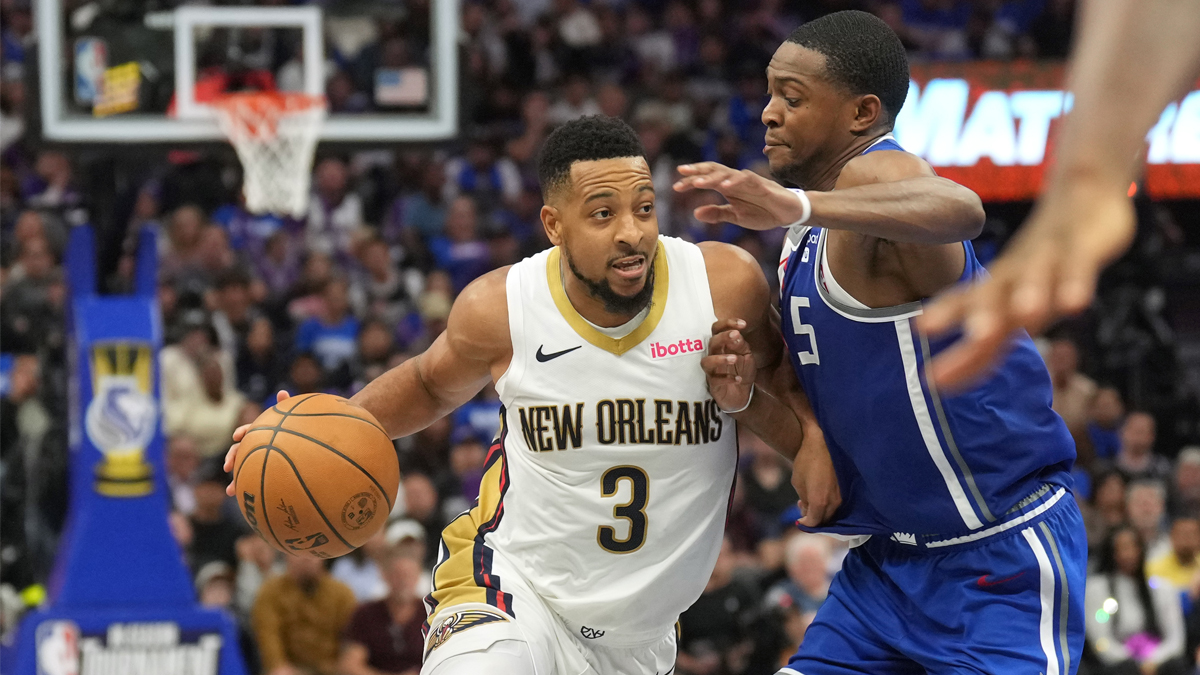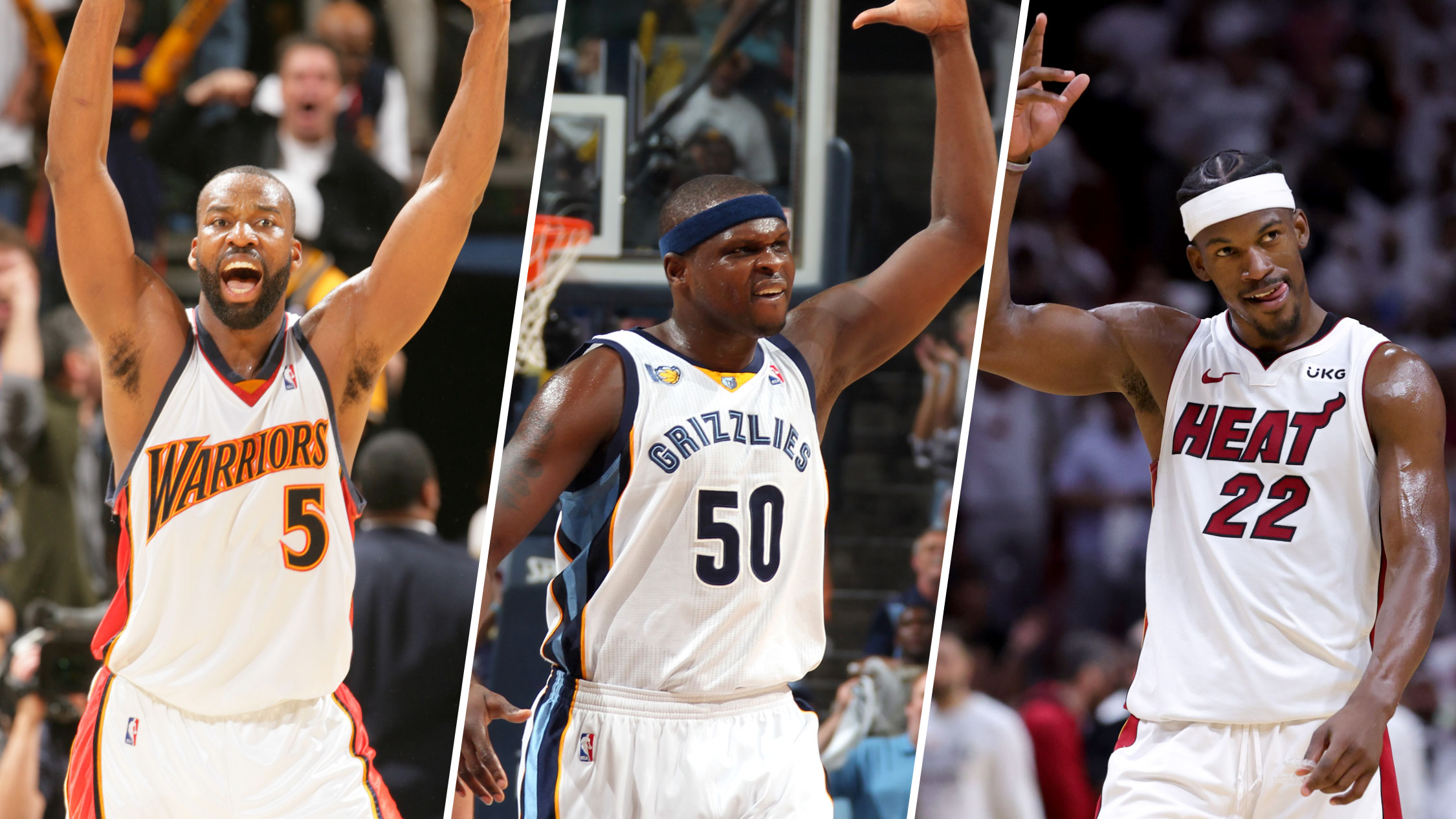The Chicago Bulls pushed their chips into the center of the table with an active offseason.
After a bevy of acquisitions that included sign-and-trades for DeMar DeRozan and Lonzo Ball, and the inking of Alex Caruso, only Zach LaVine and Coby White remain from the roster Artūras Karnišovas and Co. inherited when they were hired in the spring of 2020.
On Wednesday, that group’s quest to snap the team’s four-year playoff drought begins.
Stay in the game with the latest updates on your beloved Chicago sports teams! Sign up here for our All Access Daily newsletter.
Here are five questions that will define the season:
Can the defense be passable?
The blueprint of an eventual affirmative answer was there in the preseason: Put as much speed and switchability at positions 1 (point guard) through 4 (power forward) as possible, then leverage that athleticism advantage into forced turnovers, fastbreak chances and general havoc. The Bulls finished the preseason first in defensive rating (allowing 91.3 points per 100 possessions) and fifth in opponent turnover rate (18.9 percent).
It’s an approach that stands in contrast to the team’s defensive philosophy last season. Though they finished above-average in defensive rating — 111.5 points allowed per 100 possessions, 12th in the NBA — they played a more conservative style, forcing opponents into turnovers on just 12.7 percent of their possessions, and scoring just 14.5 points off turnovers per game, both 26th in the league.
NBA
Given the team’s massive roster overhaul, a stylistic shift makes plenty of sense. By the end of last season, the Bulls were starting the 6-foot-8 Daniel Theis and 6-11 Nikola Vučević in the frontcourt, with the 6-9 Thad Young and 7-foot Lauri Markkanen playing prominent roles off the bench.
Now, 6-7 Patrick Williams is the team’s starting power forward. Tony Bradley (6-10) will see run at backup center; so might Alize Johnson (6-7), depending on matchup. Javonte Green (6-4) and Derrick Jones Jr. (6-5) are in pole position for reserve power forward minutes, and DeMar DeRozan (6-6) will be staggered there as well.
So, yes, the Bulls will be undersized. Expect some strain protecting the rim, and don’t expect another top-of-the-league finish in defensive rebounding rate.
But perhaps there’s reason to expect more versatility. Amid the Bulls’ flurry of offseason moves, they made significant upgrades to their backcourt and point-of-attack defense — both areas of weakness last year — with the Ball and Caruso signings. Both of them impressed with their physicality and intangibles throughout training camp and preseason play.
“I think you do have a lot more flexibility with Derrick, with Javonte, with Patrick at that [power forward] spot, because that's really where your flexibility comes from. And I do think with a DeMar and a Zach and a Lonzo, us having bigger guards, there's different things we can do in coverages,” Donovan said of the team’s defensive scheme. “But inevitably you're gonna face teams that put your personnel and or your schemes in situations of dilemmas. And, OK, now all of a sudden we are doing some more switching. But do you want to switch on Anthony Davis? Do you want to switch on (Giannis) Antetokounmpo? Do you want to switch onto Kawhi Leonard? Sometimes personnel create that challenge where maybe we're not switching as much.
“There is some flexibility with it, but I don't think we can stay with just one thing all the time and expect with 29 teams in the league that's gonna be the solution for every team. There may be some switching, there may not. A lot of it's gonna be based on personnel, actions, what teams are doing schematically and some of those things. But I do think with Lonzo and DeMar and Zach and Alex, Javonte, Derrick, Patrick, we do have on that perimeter some length, physicality, that we can do some of that.”
For what it’s worth, Donovan is a decent coach to bet on in this regard. He oversaw four top-10 defenses in Oklahoma City, has never coached an NBA team that finished below 12th in defensive rating and his six seasons at this level have featured plenty of roster churn.
Can the offense be elite?
A benchmark of “passable” on the defensive end is made possible by the potential for the Bulls’ offense to break into the upper echelon of the league after a 21st-place finish in 2020-21.
They certainly have the firepower to do so. In LaVine, DeRozan and Vučević, Donovan has the capability to stagger one-to-two 20-plus point per game scorers on the court at all times — and all three in high-leverage spots. Last season, the lion’s share of shot-creation burden fell on LaVine’s shoulders, and the Bulls floundered on the offensive end when he left the floor.
Not to mention: Ball’s 3-point stroke has never looked smoother, and his passing ability should grease the team’s wheels in transition — a must after falling into the bottom-six of the league in pace after the 2021 deadline. As a foul-drawer and playmaker, DeRozan projects to pluck several areas of low-hanging fruit that plagued the Bulls’ offensive profile last season — lacking free-throw attempt totals, ball security and crunch-time execution, to name three. LaVine and Vučević are just as dynamic playing off the ball as on it.
But this is why the games are played. The Bulls’ fresh faces need to establish synchronicity, and Donovan the proper lineup combinations, through repetition, which is why the team apportioned an atypical amount of minutes per game to their key players in the preseason. DeRozan (29.3), LaVine (29), Ball (28.8) and Vučević (28.2) all ranked in the NBA's top 12 in minutes per game during their exhibition slate.
“Offensively, for us tonight, we just had way too many possessions where we’re not flowing, as organized, as in-sync with one another,” Donovan said after the preseason finale. “I think there’s times where we really do it, it looks really, really good. But it’s too sporadic.”
A top-10-rated offense and middle-of-the-pack defense is a recipe for a win total in the mid-40s and a playoff berth without the play-in-tournament qualifier attached. Can the Bulls muster that?
Does Zach LaVine have another level to hit?
Which brings us to the team’s best player, and most dynamic offensive talent.
One might think averages of 27.4 points, five rebounds and 4.9 assists with 50.7/41.9/84.9 shooting splits will be tough to best, especially considering LaVine was six assists and one made free throw away from becoming just the third player in NBA history to average 27-5-5 with 50/40/85 shooting splits.
But consider LaVine’s usage in the preseason, when he averaged 22.5 points on 51.7/52.4/89.5 shooting splits. Embedded in that line were plenty of open catch-and-shoot opportunities, driving lanes attacking bent defenses, and easy cuts and transition run-outs.
LaVine was already lethal in each of the above contexts. Last season, he shot 48.6 percent on catch-and-shoot 3-pointers (2.6 attempts per game) and was a 97th percentile cutter, according to NBA.com. He shot 60 percent from the field and 45.5 percent from deep in the Olympics playing a predominately off-ball offensive role.
But with a previously unmatched level of shot-creation around him, LaVine will get to enjoy those open looks with more consistency. It’s not out of the question his efficiency could sustain, even if his counting stats dip. That’s an adjustment he’s up for.
“It's just a little bit of weight off your shoulders,” LaVine said after a recent practice of adjusting to playing off-the-ball. “I'm fine being able to pass the ball over to DeMar in the fourth quarter and me be a spot-up guy and get some easy shots, or give the ball to Lonzo in pick-and-rolls and let him and Vooch play pick-and-roll and I be a cutter.”
And all of that is without mentioning the benefit having reliable playmakers around him could have on LaVine’s turnover totals, which, even at his best, have typically been too high. Or the potential for energy conserved being channelled on the defensive end, where LaVine showed marginal strides last season, and marked improvements during the Olympics.
“Even defensive-wise I'll be able to go out there and expend some more energy instead of having to know to wait until the fourth quarter and knowing that you’re going to have the brunt of offense,” LaVine added. “It's going to be a lot of fun.”
These are the ways that, even if LaVine’s counting stats dip, his impact on winning can rise.
What does Year 2 have in store for Patrick Williams?
Without the benefit of Summer League, a full training camp or any of the regular trappings of a first preseason in the NBA, Williams submitted a reasonably encouraging rookie year. He started 71 of the Bulls’ 72 games. He exhibited flashes of versatility on both ends of the floor, particularly defensively.
And by all accounts, the now 20-year-old followed that up campaign with a productive summer. He sparred against USA Basketball’s Olympic roster with the US Select Team. He took on a heliocentric Summer League role and had a handful of brilliant moments. He arrived in Chicago with his conditioning much improved.
For a month, a sprained left ankle threatened to derail that momentum. But Williams returned for the team’s final preseason game, and, while the Bulls are still treading cautiously with his reassimilation, he is on track to remain in the team’s starting lineup with little-to-no restrictions upon the start of the regular season.
Williams’ importance to the Bulls cannot be overstated. On the defensive end, he’ll be expected to crash the glass, protect the rim, switch out on the perimeter and guard the opponents’ best wing scorer. On the offensive end, he’ll be asked to channel his skills into pushing the floor off rebounds in transition, attacking closeouts decisively and raining catch-and-shoot 3-pointers without hesitation.
In short, he’ll need to do it all.
Was all of this worth it?
In the past seven months, the Bulls have spent three future first-round picks (though they returned one in the Lauri Markkanen sign-and-trade) and around $200 million in total guaranteed salary to assemble this new-look roster.
While the team’s offseason moves were met with warranted buzz from a fanbase yearning for the return to relevance Karnišovas promised during his Bulls-tenure-opening press conference, legitimate expectations now follow. So, too, does a bit of pressure, given LaVine’s expiring contract and a shortage of tradable draft capital with which to retool moving forward.
So, will the Bulls snap their four-year playoff drought, and in doing so set the franchise on the path intended? Or will another season end in disarray?
All that’s left is the only thing that matters.
The games.
Click here to follow the Bulls Talk Podcast.


